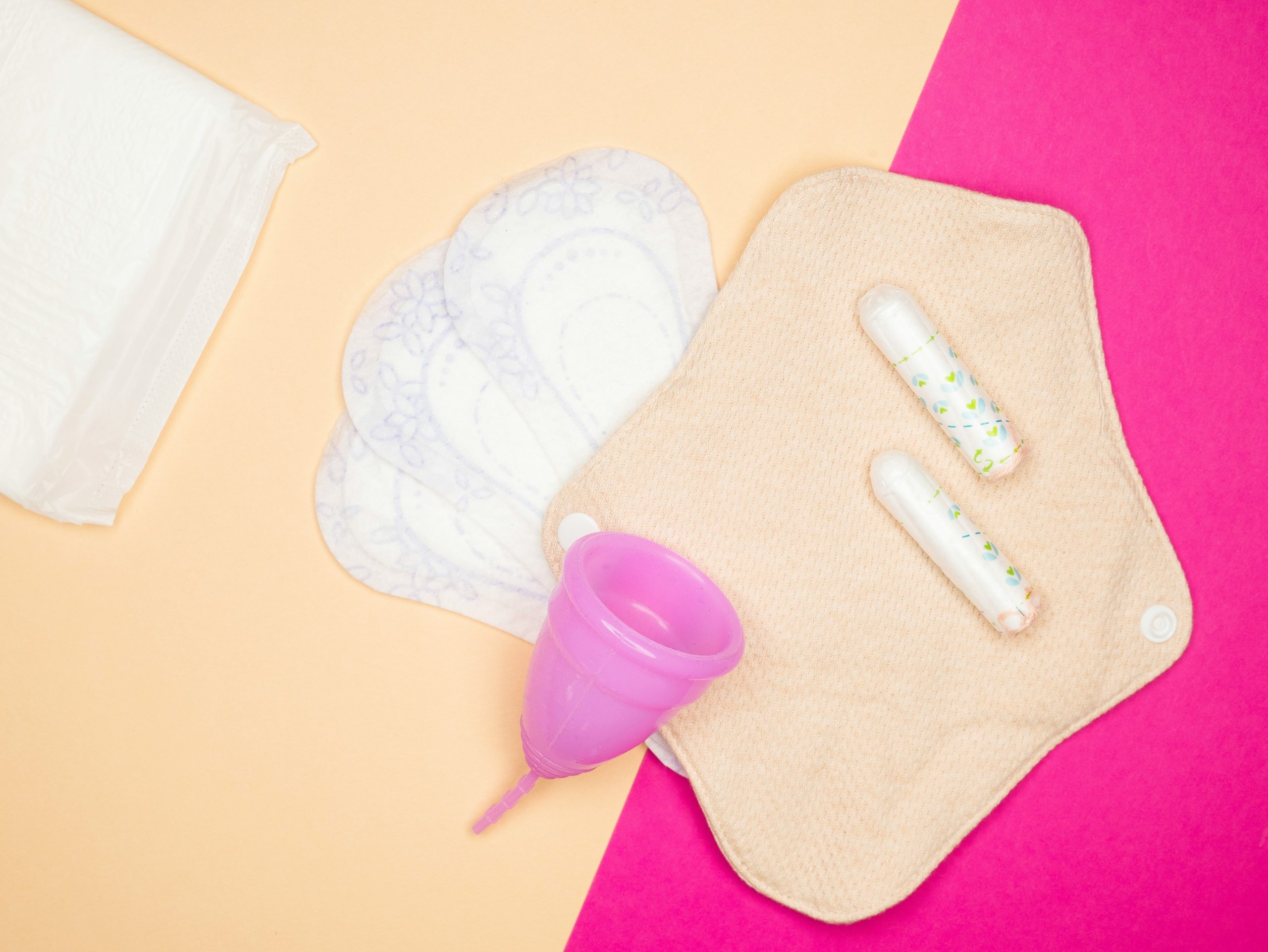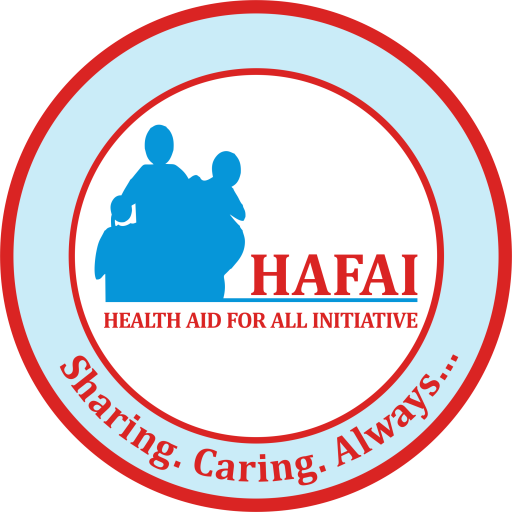MENSTRUAL HYGIENE MANAGEMENT

Menstrual Hygiene is a very important subject that is only recently beginning to gain the needed attention and be perceived from angles such as, gender equality, Water, Sanitation, and Hygiene (WASH), Reproductive health, Education and Public health because of its impact on the environment, the economy, global workforce and nations development; education, family, health and safety of the girl child.
Menarche, a girl’s first menstrual bleeding which is also often considered the central event of puberty in adolescent girls, often brings about psychological, social as well as behavioral changes in adolescent girls transitioning from girlhood to womanhood. Menstruation is a natural and normal process for every woman and adolescent girl which happens once every month as a result of the shedding of the inner lining of the womb or uterus. This is often a very new and sometimes disturbing experience for adolescents’ girls; the stress of having to cope with blood coming out of her vagina, the cramps that accompany menstruation as a result of the contractions of the uterine muscle, as well as the general discomfort girls feel during their period. Menstrual hygiene management is thus important, after all, a girls and women should not exclude themselves from regular everyday activities, hence the need for effective ways to manage menstruation properly so that women and girls can feel clean and free to relate and compete with their male counterparts in all spheres of life.
PERSONAL HYGIENE DURING MENSTRUATION
Personal hygiene refers to the principle of maintaining cleanliness and grooming of ones body., from head to toe, and also includes taking frequent baths, combing of hair, brushing the teeth and grooming the nails. There are also other domains of hygiene such as food safety, environmental sanitation, safe water etc. Personal hygiene generally helps to prevent water and sanitation related diseases, and is especially important during menstruation and requires more attention, as girls and women need to stay clean and free of offensive smell. In a bid to effectively manage menstruation, some girls use various unhygienic materials like random rags, tissue papers, leaves, papers, mud, cow dung, feathers, mattress stuffing, cotton ball e.t.c These are harmful and may cause great discomfort and diseases such as urinary tract infections which in some cases lead to infertility. There are few material that are hygienic enough when used properly and can help girls feel more comfortable and confident during their period, some of these materials include:
- Reusable menstrual pads
- Disposable sanitary pads
- Menstrual cups
- Tampons
Staying clean during menstruation
In order to ensure cleanliness and good hygiene, it is important for girls and women to do the follow:
- Change menstrual material regularly between 4-5 hours interval
- Wash inner wears and keep them clean
- Bathe regularly (like 2-3 times daily)
- Wash the vagina properly with water only before changing the pad
- Do not use soap to wash the vagina
- Do not use spray on the vagina
- Wash the reusable menstrual pad properly with soap and water and dry under the sun
- Menstrual cups should be emptied when it is filled up and rinsed properly
MANAGEMENT OF MENSTRUAL WASTE
Disposal of menstrual materials after use is a major concern because it affects the health of the individual and the environment as well. Menstrual hygiene management also involves effective disposal that will not pose any harmful effect on the individual or the environment at large. Disposable sanitary pads are often made of non-biodegradable materials, which do not discompose and are therefore harmful to the ecosystem. Reusable menstrual pads on the other hand have no harmful effect on the environment and the health of an individual if managed properly, the soaked clothe are easily washed out with soup and water making disposal in privacy possible without causing any environmental hazard.
STRATEGIES FOR MANAGEMENT OF MENSTRUAL WASTE
(1) Disposal of menstrual waste is of major concern as it affects health and environment. There is a need for effective menstrual materials which needs less and cost-effective management.
(2) Companies dealing with manufacturing of sanitary pads or other articles should disclose the information on the pads regarding the chemical composition of the pads so that appropriate technologies could be used for their disposal and treatment.
(3) Environment-friendly chemicals should be used by manufacturers of sanitary products to stop soil and water pollution and to fasten the decomposition process.
(4) Guidance regarding menstrual management to adolescent girls and women is a much needed step. Menstrual hygiene management should be an integral part of education curriculum.
(5) Distribution of menstrual products should be free of cost in schools and educational institutes [44]. Recently, instead of subsidizing the menstrual pads, Indian government has imposed 12% GST on them which is not very women friendly.
(6) The toilets must be designed and built to be girl/ women friendly [45]. In Kerala, some schools have installed sanitary napkin vending machines in toilets which are semiautomatic and operate by inserting a coin in it. It contains 30–50 sanitary napkins to meet the emergency needs of the girls/women in schools
(7) There should be a separate collection system for the menstrual wastes without affecting the privacy and dignity of women. Specific sanitary dispensers to collect menstrual waste should be installed.
(8)There should be sufficient space for washing, cleaning private parts and hands and for changing or dealing with stained clothes. To fulfil these requirements, there must be water availability,toilet paper,dustbin, and as ink to wash menstrual products.
(9) Dust bins should be covered by lid and emptied from time to time to keep the toilets clean from flies, mosquitoes, and bad odour.
(10) Covered containers and dustbins have advantage of hiding the waste being seen by others. They are installed in a place that offers privacy.
(11) Gloves and proper safety tools should be provided to the cleaners so that they are not exposed to pathogenic organisms and harmful gasses.
(12) Government should introduce new rules for the safe disposal and treatment of menstrual wastes as they have made for solid or biomedical wastes. Appropriate policy and legal framework is necessary for the management of menstrual wastes.
(13) Government and non-government organizations should come forward for making the people aware of management of menstrual wastes. Government should give the funds to the Municipal Corporation or NGOs for the construction of women friendly toilets.
(14) Health implications of menstrual wastes should be properly investigated. Financial support should be given to the institutions to carry out the research in the management of menstrual wastes.
(15) Scientific research should be encouraged for the most suitable techniques of disposal of sanitary pads or other menstrual products.
(16)Allocation of budget in schools to support menstrual hygiene management studies should be conducted.
(17) Collaborative efforts (trash bins) should be made.
(18) Incinerators are a better option for disposal but should be operated in a controlled environment so that harmful gasses emitted will not harm larger area
WAYS OF DISPOSING USED MENSTRUAL MATERIAL
- Fold used sanitary pads in cellophane paper and throw in a dustbin
- Throw wrapped sanitary pad in pit toilet
- Burn in an incinerators
- Wash reusable sanitary pads properly with soap and water and spread under the sun because the sun has anti-microbial properties that can help kill the micro organisms that may be on clothe.
IMPORTANCE OF HAFAI REUSABLE MENSTRUAL PAD
HAFAI reusable menstrual pads when used properly are very effective and have advantages such as;
- It is reusable
- It is easy to use and convenient
- It can be adjusted to personal flow
- Is leak-proof, and ensures lasting confidence
- Works with any pant
- Ensures disposal with privacy and dignity
- Is Eco friendly
- Saves cost as it can last for 3 years if used properly
- Erases the fear of menstrual material been used for ritual
- Uses little water for washing and dries easily
- Is made from local fabrics

